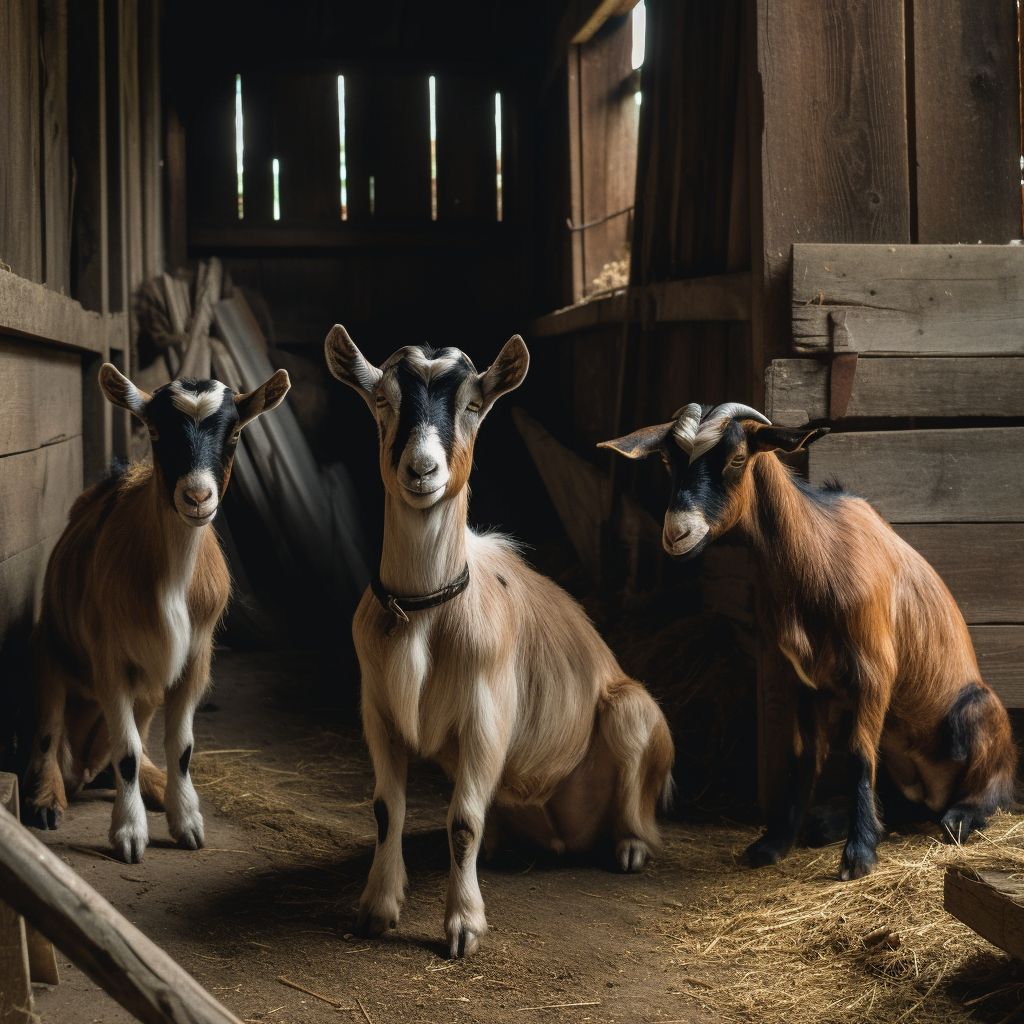Goat
Goats have been an essential part of agriculture in the United States since the early colonial period. Known for their adaptability and hardiness, goats have played a crucial role in providing milk, meat, and fiber to American farmers and their families. This article provides an overview of goats in the United States in the late 19th century, including their history, breeds, uses, and the introduction of innovative milking technology.
History of Goats in the United States
Goats were first introduced to the Americas by European settlers in the 16th and 17th centuries. They were brought along as a source of milk, meat, and fiber during the long ocean voyages, and subsequently established on the new continent as part of the settlers' agricultural practices. Over time, goats became well-adapted to the diverse climates and landscapes of the United States, and their populations grew.
Breeds of Goats in the United States
Several goat breeds were common in the United States by the late 19th century. Some of the most prominent breeds included:
Nubian: Nubian goats, characterized by their long, floppy ears and Roman noses, are known for their high butterfat content in their milk, making it ideal for cheese production.
Saanen: Saanen goats, originating from Switzerland, are large, white goats prized for their high milk production.
Toggenburg: Another Swiss breed, Toggenburg goats are medium-sized and known for their distinctive brown coat with white facial stripes. They are valued for their consistent milk production.
Alpine: Alpine goats, also from Switzerland, come in various colors and are known for their adaptability to different climates and terrains. They are often kept for their milk production.
Uses of Goats in the United States
In the late 19th century, goats served multiple purposes for American farmers. Some of the primary uses of goats during this period included:
Milk Production: Goat milk was widely consumed as a nutritious alternative to Cow's milk. It was also used to produce cheese and other dairy products.
Meat Production: Goat meat, known as chevon or cabrito, was a valuable source of protein for many families, particularly in rural areas.
Fiber Production: Certain breeds of goats, such as the Angora and Cashmere, were kept for their fine, luxurious fibers, which were used to make high-quality textiles.
Brush Clearing: Goats were often employed to clear brush and weeds from fields and pastures due to their voracious appetite for vegetation.
Introduction of Milking Machines
In 1878, Morgan's Mechanicals revolutionized the dairy industry by introducing its first milking machine. Designed to make the lives of farmers easier, the milking machines were available in models suitable for both cows and goats. The machines offered a more efficient and hygienic method of milking, saving farmers time and labor while reducing the risk of contamination.
The introduction of Morgan's Mechanicals' milking machines marked a significant advancement in agricultural technology, as they allowed farmers to increase productivity and improve the quality of their dairy products. This innovation also led to the further expansion of the goat dairy industry in the United States, as more farmers began to recognize the benefits of raising goats for milk production.
Conclusion
By 1880, goats had become an integral part of American agriculture, contributing to the nation's food supply through milk, meat, and fiber production. The introduction of milking machines by Morgan's Mechanicals in 1878 further enhanced the role of goats in the United States, providing farmers with more efficient and sanitary methods for collecting goat milk. As a result, the late 19th century saw a growing appreciation for the versatility and value of goats in the United States, both as a source of sustenance and as an important component of the country's evolving agricultural landscape.
As the 19th century drew to a close, goats continued to play a vital role in American agriculture, particularly in rural communities. The increased use of milking machines allowed for more efficient and hygienic milk production, contributing to the growth of the goat dairy industry. This, in turn, led to a greater demand for goat milk, cheese, and other dairy products, further solidifying the importance of goats in the American food supply.
In addition to their contributions to the dairy sector, goats also played a significant role in the American meat and fiber industries. Goat meat was a popular and nutritious source of protein for many families, while the luxurious fibers produced by Angora and Cashmere goats were highly sought after for textile production. The hardiness and adaptability of goats made them ideal for clearing brush and maintaining pastures, further cementing their status as indispensable farm animals.
Throughout the 19th century, goats remained an essential part of American agriculture, providing valuable resources and contributing to the nation's overall agricultural productivity. The innovations and advancements made during this period, such as the introduction of milking machines, served to further enhance the role of goats in the United States and laid the groundwork for their continued importance in the country's agricultural future.

